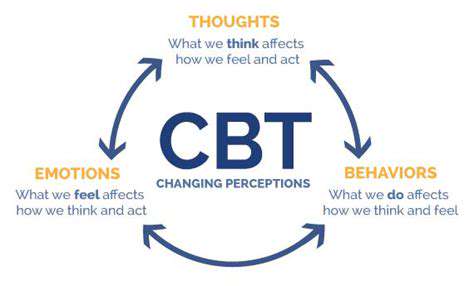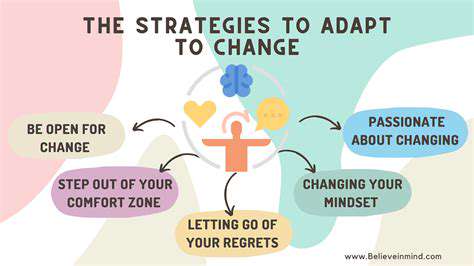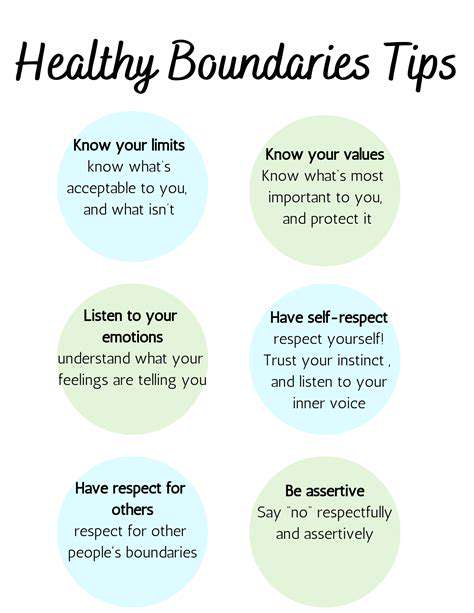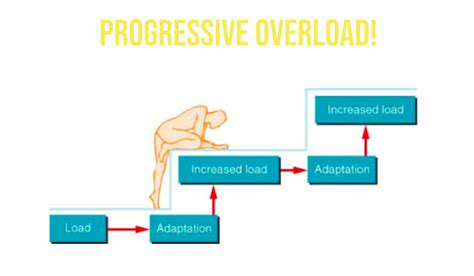Guide to Managing Chronic Pain Naturally
Mindfulness and Emotional Well-being
Cultivating Inner Peace Through Mindfulness
Mindfulness, the practice of paying attention to the present moment without judgment, plays a crucial role in managing chronic pain. By focusing on the sensations in your body, thoughts, and emotions, you can begin to detach from the pain's grip on your attention. This detachment allows for a shift in perspective, moving you away from the constant focus on the pain and toward a more balanced and accepting awareness of your overall experience. The practice of mindfulness can help you develop a greater understanding of your emotional responses to pain, allowing you to respond more effectively and compassionately.
Engaging in mindfulness techniques, such as meditation or deep breathing exercises, can significantly reduce stress and anxiety, both of which are often intertwined with chronic pain. Chronic pain can trigger emotional distress and heighten feelings of helplessness and frustration. Mindfulness practices provide tools to acknowledge and manage these difficult emotions without getting swept away by them.
Understanding the Connection Between Emotions and Pain
Chronic pain often triggers a cascade of emotional responses, ranging from anxiety and fear to depression and anger. These emotions can intensify the experience of pain and create a vicious cycle. Recognizing this connection is vital to breaking free from the cycle. Understanding how your emotions affect your pain perception is a key step in developing strategies for managing your condition.
Mindfulness allows you to observe these emotional responses without judgment. This non-judgmental observation helps to create space between the emotion and your reaction to it. By understanding the emotional triggers and responses to pain, you can develop coping mechanisms that are tailored to your individual needs.
Learning to differentiate between the physical sensation of pain and the emotional reaction to it is an essential part of this process. This differentiation helps you to respond to the pain more effectively and less reactively.
Mindfulness Techniques for Pain Management
Various mindfulness techniques can be integrated into daily life to manage chronic pain. Simple exercises like body scans, where you systematically bring awareness to different parts of your body, can help you identify and release tension. Mindful movement practices, such as yoga or tai chi, combine physical postures with mindful breathing, promoting both physical and emotional well-being. These practices can be particularly helpful in managing chronic pain.
Mindful breathing exercises, focusing on the sensation of the breath entering and leaving the body, can help to calm the nervous system and reduce anxiety. These techniques can be practiced anywhere, anytime, making them easily integrated into your daily routine. Furthermore, engaging in activities that bring you joy and a sense of purpose can create a positive framework for managing chronic pain.
Utilizing mindfulness in daily activities, like eating or showering, can also be an effective strategy. Paying attention to the sensations involved in these everyday tasks can help you to stay grounded and present, reducing the pain's impact on your overall well-being.
Progressive muscle relaxation techniques, combined with mindfulness, can help to release physical tension that often accompanies chronic pain. Guided meditations specifically designed for pain management can provide structured support for these practices.
Journaling, combined with mindfulness, can be a powerful tool for understanding your pain patterns and emotional responses. This process of reflection and self-awareness can lead to more effective coping strategies.
Read more about Guide to Managing Chronic Pain Naturally
Hot Recommendations
-
*Guide to Managing Gout Through Diet
-
*Best Habits for Financial Well being
-
*How to Build a Routine for Better Mental Health
-
*How to Eat Healthy on a Budget [Tips & Meal Ideas]
-
*Guide to Practicing Self Acceptance
-
*How to Incorporate More Movement Into Your Day
-
*Guide to Managing Chronic Pain Naturally
-
*Guide to Building a Reading Habit for Well being
-
*Top 5 Weight Loss Supplements That Actually Work
-
*Best Exercises for Postpartum Recovery [Beyond Abdominal Work]











